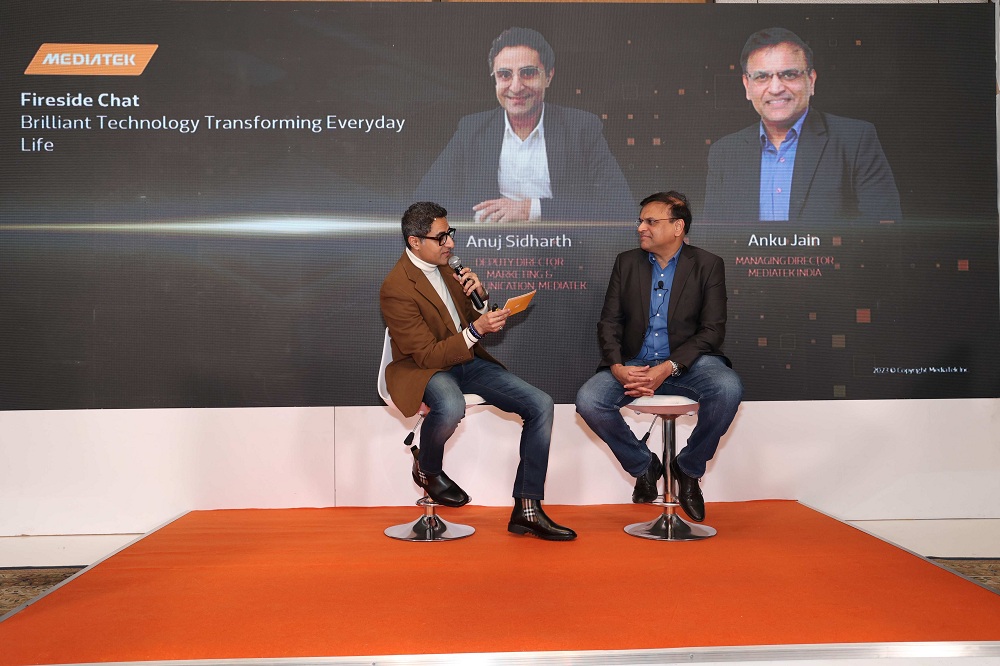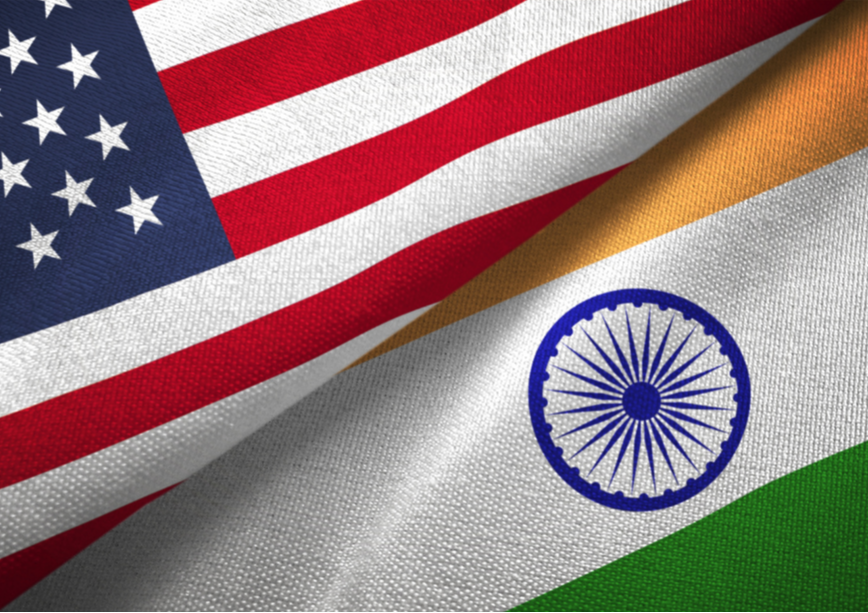Technology keeps demand relevant for apparel industry: Akhil Jain, Madame

NEW DELHI: In-store shopping trips have been replaced with online shopping, and the pandemic encouraged the adoption of new buying patterns across industries, says Madame's executive director Akhil Jain. In an interaction with The PageOne Asia's Parul Manchanda, Jain talks on the retail sector, demand for apparel, and digitization of companies. Edited excerpts.
Q- How the business of MADAME has been affected by Covid-19 and what are the measures the company has taken to put the business back on track?
The Covid 19 phase has been the most unexpected and unprecedented expectation of business downfalls. With most of our stores being shut down due to the pandemic, our inventories were affected. Demand, supply, and workforce availability were affected globally simultaneously. Fashion and apparel brands went online with their products as an absolute necessity to survive in the market and therefore we at MADAME gained lost momentum through our online sales. It gave us the competence to attract new customers and reach out to existing customers in a seamless manner which helped in retaining the trust of our customers and profitability.
Technology has kept the demand for the apparel industry relevant. Demand for fashion evolved and started changing gradually due to lockdown fatigue and the beginning of the wedding season. While some apparel like loungewear met with panic buying situations, other experienced dramatic drops in demand and revenues creating extreme pressure on operational costs.
Q- By when are you expecting the revival process to commence in India?
In-store shopping trips have been replaced with online shopping. The pandemic encouraged the adoption of new buying patterns across all industries. For the past few months, the retail industry has culminated in various experiences and aspects of selling on an online platform. The virtual look and feel of the products have been magnified for the customers through in-depth analysis and commitment towards some basic facets that are mandatory to launch online. The shopping behavior of consumers had temporarily changed but brands have been forced to change their product strategies to suit the changing demands of people in the long run.
We have witnessed industry transformations in shedding the initial fears of large corporations displacing small shops. There is now a noticeable shift towards organized retailing. The sector will have one of the highest incremental human resource requirements of 17.35 million by 2022, offering opportunities in sales, merchandising, store management, central management, and procurement. Brands will take time to revive completely while consumers will become more sensitive towards fast fashion. This shall initiate an inclination towards garments that have more longevity and create an emotional value for the customers.
Q- What is MADAME's strategy for India for the year 2021?
The strategy during these hard times is to keep the expenses under control, focus on timely delivery, and offer quality products and value for money to customers. We are emphasizing on e-commerce and online business which is expected to become a key contributor to our revenues in the coming months. Our online business has helped us to understand customers better through prompt customer feedback. The entire retail industry witnessed a major shift towards digitization in 2020.
For MADAME the online sale which earlier contributed 2-3% amplified to 8-10% with a continuing upward trend. The brand has also reinforced the need to strengthen supply chain management with faster product delivery for international clients. At present, customers receive their products within two days of ordering online. This has helped them to retain and grow their customers. In the upcoming 3 years, the company is expecting a three-fold growth through online sales. In the future, a major share of the company’s overall revenues will be attributed to online sales only.
For the past few months, we have been able to culminate various experiences and aspects of selling our collections through online platforms. The virtual look and feel of the products have been magnified for the customers through in-depth analysis and commitment towards some basic facets that are mandatory to launch online. Our teams have ensured smooth supplies and efficiency in warehouse management. We are also successfully providing an end-to-end customer experience through exceptional data management. We plan to invest in technology which is a vital tool required to overcome some challenges faced by customers. With investments in high-end products, we aim to boost the online shopping experience.
Q- What are the new trends that you are witnessing in the shopping habits of people?
Consumption patterns have been altered by the pandemic and a more adaptable and sustainable trend is currently being adopted by many countries. Understanding customers’ behavior types play an important role in helping businesses achieve and maintain high levels of customer satisfaction. Shoppers are either averting from travel or unwilling to visit physical stores.
Sweatpants and the style of the ’90s returned to closets. Comfort clothing and loungewear emerged as the go-to outfit for most people. The innovations in creating and conceptualizing masks have also added to tremendous business opportunities for the fashion world. This includes styling masks for men, women, kids and teenagers. The style also includes adding chains, uses soft fabrics that are safe for travels and local use. People also reinvigorated older clothes, with more time being spent at home, working from home in pajamas or wearing shirts that probably are loose in their fittings.
Affordable fashion is an emerging trend for women, men, teenagers, and children. Various companies are now conceiving ideas to showcase lifestyle brands at cheaper rates. New strategies in the manufacturing, retailing, and distribution sectors are being now devised to cater to the emerging westernized style of clothing. Daywear, summer essentials are being termed as the new quarantine wardrobe. While luxury apparel clothing has stepped aside friendly loungewear and activewear have also logically contributed towards buying patterns.
Q-According to you what are the challenges and restrictions in the retail sector that needs to be addressed?
Digitization allows companies to adjust products based upon demand for those products using real-time sales information, allowing them to accelerate the production of best-sellers and cut their losses on the laggards. The opportunities surrounding digitization have made it possible for brands to access, store and process a large amount of data both from within a firm and externally. Many manufacturing units now obtain individualized customer data to personalize the product design, service and sales process. In a system with end-to-end transparency, every member within the network will have access to all data. However, some of the pertinent challenges faced by the sector are supply chain disruption, modified product mix, customers postponing their purchases, re-evaluation of store layouts and store counts and adjustments in channel mix
Q- What is the current scenario of the fashion and retail sector in India?
The pandemic has fast-tracked the growth of the D2C movement with more consumers opting for shopping online directly from the brands and this is helping fashion brands in D2C segment generate revenue even during the pandemic. Cost-saving measures have been adopted by fashion retailers, including rental negotiations, and overheads rationalization last year, to protect the business. Most marketing agencies and brands are changing their existing strategies to adapt to the new normal. Some central themes focus on experiences that support a virtual and hybrid brand presence.
Online sales have been the key focus for most of them in the apparel industry while also focussing on safe in-store shopping. To match up with the increase in demand, most organizations have started gearing up their online training facilities for specific retail capabilities along with integrating businesses. The focus has now shifted to creating teams with skills and a mindset that enable businesses to provide consumers with great brand experiences.
Agencies have understood that every business is unique, and needs a unique solution. They help us in diving deep into the pain points businesses are facing, through effective consulting that goes beyond simple interface tweaks to highlight potential improvements related to strategy, branding, design, functionality, and usability. Companies that have applied advanced technologies to experiences created a new domain for customer interaction. There is a constant need to upgrade and update commercial and social relationships. The future always keeps evolving and technology-enabled business trends will not only be a boon for consumers but also stimulate growth, innovation, and a new flutter of pace-setting companies. The retail industry is steadily building a niche that has been quite evident especially during COVID-19. Consumers are currently demanding more shopping options that are convenient, accessible, and safe.
Q- Tell us about some of the new technologies MADAME is focusing on for a post COVID world?
The technological advancement that the world has experienced over 3 decades have brought the whole world together and the world has become a single platform, offering innumerable opportunity to do business transactions. Quality and price have become the only deciding factor. The countries of the world also came closer due to infrastructure enabling faster travel. Digitization has given us a chance to expose all of our inventories to all the target markets in one go. The working of the retail industry is never going to be the same.
Earlier last year, in a strategy jig we strengthened our online presence. We launched an exclusive online shopping website glamly.com. Our existing website was revamped and modified in line with our current apparel line and the diversified products to provide a personalized customer experience. In India, with more than 700 points of sales, we have devised our distribution mechanics to focus on market penetration.
The e-commerce industry has witnessed a boom in the past few months and thus on some of the platforms like Glamly, Myntra, Amazon and Ajio led to massive sales for us at MADAME. New strategies in the manufacturing, retailing, and distribution sectors have been devised to cater to the emerging westernized style of clothing. Our manufacturing facilities are based out of Ludhiana. India is our main market with distribution channels all over India and some of the neighbouring countries as well.
Q- Do you think AI & Digitisation helping in delivering powerful optimization capabilities?
Digitizing processes can enable improved visibility and provide real-time insights into the supply chain, giving people along the chain full control. Automation is the most important benefit of using AI to control supply chains in retail. For instance, an AI-powered warehouse mainly relies on robots to store, locate, and pick goods. Pre-programmed machines can do it routinely, thus speeding up the packaging processes and taking productivity to a whole new level. Virtual reality can improve supply chain operations in four main areas: product and process design, data and process visualization, employee collaboration, and experience-based learning. Digital Supply Networks (DSN) are increasingly in focus as they provide an opportunity to exponentially improve efficiency and effectiveness in the supply chain, optimize cost and obtain end-to-end visibility.
AI-powered forecasting can reduce errors by 30 to 50% in retail production. The improved accuracy leads up to a 65% reduction in lost sales due to inventory out-of-stock situations and warehousing costs decrease around 10 to 40%. The new market will deal with integrated planning and execution, logistics visibility procurement 4.0, smart warehousing, efficient production management, autonomous and B2C logistics and prescriptive sales and expansion analytics. AI is a significant digital transformation driver due to the speed, ease, and cost optimization it offers. AI helps brands match supply with demand and limit unnecessary manufacturing. It further improves shopper experiences. Chatbots are being used by brands to build a direct channel with customers and solve their queries.
Q- What are the initiatives taken by your company to reduce wastages and carbon footprints?
MADAME has always maintained its commitment to nature and sustainability. We have created innovative designs that minimize textile waste in the manufacturing process. Our designs are accurate and arrive with environmental responsibility in mind. We time and again innovate and experiment with recycled materials and endeavour to reuse unusual materials that speak the local culture.
We feel emerging as a sustainable fashion brand is the need of the hour and all brands need to move towards environmentally-friendly fashion. We are committed to providing environmentally friendly fashion and spreading awareness by constantly looking for ways to redefine fashion by creating sustainable and ethical products. Our long-term sustainability goal is to move towards becoming a 100% environmentally friendly organization.
We also plan to reduce the carbon footprint by at least 80% and then become a carbon-negative company by 2030. The countries of the world also came closer due to infrastructure enabling faster travel. Digitization has given us a chance to expose all of our inventories to all the target markets in one go. The working of the retail industry is never going to be the same.











